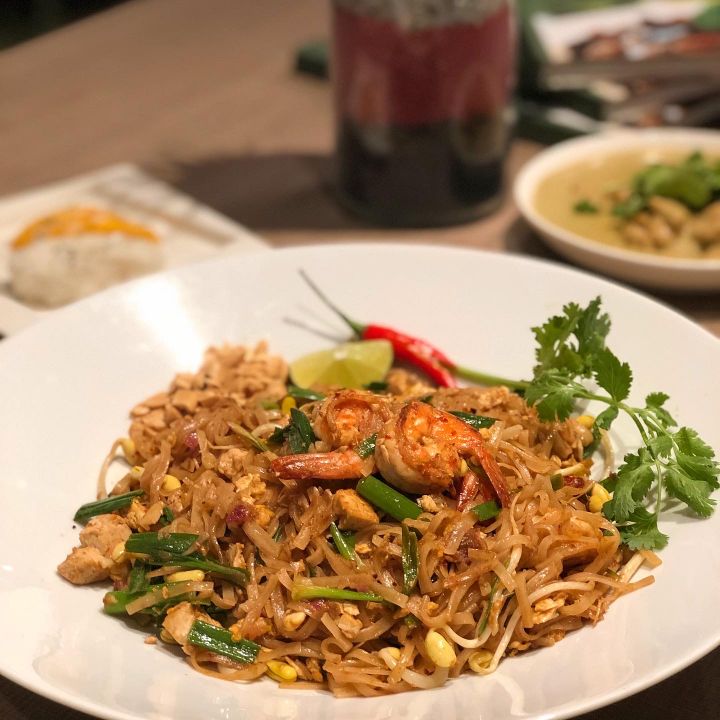|
Pad Thai |
|
- Serves 3
Fully authentic, no compromise in ingredients or flavor - follow my Pad Thai recipe and it is guaranteed to transport you to the streets of Thailand. There are a few elements one needs to keep in mind when making good Pad Thai,
- Dried shrimp: for that umami punch. I generally use small dried shrimp from the Thai supermarket, but you can chop them small if yours are slightly bigger in size.
- Fish sauce: again for that special umami flavor.
- Preserved radish: It is hard to find but can easily be replaced with pickled daikon (the one used in sushi-making).
- Tamarind paste: I much prefer making my own by rehydrating dried tamarind rather than buying bottled paste which just doesn’t have as much flavor.
The rest of the ingredients are quite easy to find; just remember to have everything prepped before getting started as the recipe itself comes together in minutes. Happy cooking!
Ingredients for Pad Thai1/3 package Thai flat rice noodles (140gms)
1/3 cup extra firm tofu (add 1 cup tofu for vegetarian Pad Thai) 1 cup Chinese chives or spring onions, cut into 1” matchsticks 1 cup bean sprouts, rinsed 2-3 small shallots, minced 3 cloves garlic, minced 40g tamarind paste (available in Indian/Thai grocery stores) 1/2 cup hot water 2 heaping tablespoons brown sugar or palm sugar 2 tablespoons fish sauce 1/2 teaspoon ground dried chili or 2 fresh bird’s eye chilies, chopped 4-6 tablespoons coconut or vegetable oil 2 tablespoons chopped preserved radish or daikon 1.5 tablespoons dried shrimp, chop smaller if necessary 200g peeled shrimp or chopped chicken 2 eggs ground white pepper, for sprinkling 2 tablespoons coarsely chopped peanuts 1/2 lime |
Recipe |
Prepping
Cooking meat and vegetables
|
Notes: As always, in Thailand, condiments such as sugar, chili flakes, vinegar and fish sauce are available at your table for your personal taste.
For more delicious recipes, check out our upcoming hands-on cooking classes in Downtown Singapore.
Click here for more details.
Click here for more details.


